I have been fortunate throughout my school years (and they are plenty) to have visited some very interesting places and this one is in my top ten. The Brooklyn Brewery which has been famous for what else, its beer. Most notably, the Brooklyn Lager. But this was not just a visit where I would go and have fun and take pictures and drink my favorite beverage: beer. I was going to make this an educational experience and tell you more about the brewing process, the marketing material, the ingredients, the tasting process and hopefully post some colorful pictures to back all this up because we tend to learn more visually, scientists say.To start, I would like to give a brief history of the Brooklyn Brewery. It was started in 1988 by Steve Hindy and Tom Potter. They had a contract with the Matt Brewing Company in Upstate New York and from there they would sell their beer to other distributing companies (brooklynbrewery). They then acquired a former matzo factory in Williamsburg, Brooklyn and turned it into a functional brewery since 1996.
I had the opportunity to book a small batch tour for $15 on a Tuesday afternoon from 5PM to 7PM. There were about 15 people in our group which was very comfortable for our host, Tim Rozmus to show us around, talk to us about the variety of beers, where they get their ingredients and show us the production process. We had the chance to taste four beers in their tasting room which was essentially a spacious bar with no cash register and benches all around for people to sit and socialize like in any beer establishment. Beer drinkers tend to talk a lot. Let’s begin our analysis with the basics.”Most beers are made up of four basic ingredients: 1) barley which is processed into malt, then brewed, 2) hops which are added during brewing to balance the malt with a more bitter flavor, 3) yeast, which adds carbonation and alcohol content during fermentation and 4) water (Escoffieronline).
The most basic distinction to make in a beer is whether it’s an ale or a lager, which is determined by how the yeast ferments during the brewing process (Escoffieronline). We learned that beers are brewed in tanks (which I have pictures of). In ales the yeast ferments at the top of the tank, which is called top-fermenting. The brewing of ales is done in warmer environments, generally between 60 and 72 degrees fahrenheit, which makes the yeast brew more quickly and causes more flavorful, complex and generally darker beers. Whereas in lagers there is bottom-fermenting which means the yeast ferments at the bottom of the tank. Lagers are brewed in colder temperatures for a longer time than ales which causes the yeast to produce fewer of the compounds that add flavor. This gives rise to more crispier, less complex beers.
As for the styles of ales they are separated into pale ales and india pale ales (IPA’s) which are known for being very hoppy and light in color. Then we have the stouts and porters which are very dark beers but not necessarily heavy. Stouts tend to have a roasted malt or caramel flavor whereas porters have roasted coffee, chocolate and bitter flavors. The last ale style is the wheat beer which are very common in Germany and are light colored but heavy on the palate with natural flavors like fruits and vanilla (beeradvocate.com)
For our lager styles we have two types: the pilsners and the ambers. Pilsners are pale and medium bodied with crisp and slightly hoppy flavors. Ambers are darker and reddish in color with some maltiness and generally have light fruit flavors (Escoffieronline).
At the brewery we had the chance to taste the Brooklyn Lager, the Brooklyn Summer Ale, the Serpent and the Tangerine Wit. The Brooklyn Lager is their flagship beer. “It is amber gold in color and has a refreshing bitterness and floral hop aroma and a caramel malt finish” (brooklynbrewery). “The Summer Ale is a flavorful pale ale made with British barley and capped off with German and American hops to provide clean bitterness and a bright, floral aroma” (brooklynbrewery). The Serpent is a Belgian style golden ale or “Champagne Beer” as Tim mentioned, which is aged on cider lees in bourbon barrels for more than a year then bottle conditioned similar to the Champagne method. Then finally we tried the Tangerine Wit, a wheat beer that has been brewed with tangerine peels from Jeju Island in South Korea, “this beer has a sunny aroma and orange notes and a slightly herbal spice on the finish” (brooklynbrewery).
Our guide Tim gave us a lesson on how to taste and enjoy a beer which was rather surprising as I knew we only do this with wine but I was mistaken. There are four main things that we need to do: first you should raise the beer in front of you but not in direct sunlight as that dilutes its true color and describe its color and consistency and just appreciate the way it looks. Second, “swirl the beer in the glass and this will agitate the aromas and stimulate carbonation” (beeradvocate). Third, take two quick sniffs then one with your mouth open, then only through your mouth and let olfaction guide you and enjoy the bouquet of aromas. And lastly sip the beer but do not swallow immediately. Let the beer go all over the taste buds of your tongue and try to detect the various flavors and breathe out while you do that as this can help you detect any sweetness, saltiness, acids or general bitterness. “Try this again after the beer warms up a bit as cold beer tends to hide some of the flavors” (beeradvocate).
The brewery does in fact get hops and barley and other ingredients from many places around the United States and the world depending on what kind of beer they want to produce. It is a perfect example of what we learned in our wine class that the terroir plays a great role in the flavor of the wine so is the case if you use ingredients from a certain place to make beer. These will give the same characteristics to the beer itself. But our guide, Tim, emphasized that they never thought about using any other type of water than New York City tap water, which he says is one of the finest waters in the world. I could not disagree with him but some of our tourist friends in our group looked a bit surprised.
The whole brewing process contains seven basic steps that almost all breweries follow. We will briefly explain them all. First is the mashing. Mashing takes place in a vessel called the mash tun. This is where the grains like malted barley are soaked in hot water for about an hour to release the sugars contained in them. “Releasing the sugars is vital as sugar is the food that yeast needs to produce alcohol during fermentation” (homebrewacademy). Second is the sparging. In this step the grains are rinsed with hot water in order to extract any remaining sugar. Then the grains are separated from the rest of the liquid which is called lautering. This liquid is called the wort. Third step is to boil the wort. Boiling kills any micro-organisms and this is when the hops are added. The hops require boiling water in order to release their flavor components. When the hops are added this will give different characteristics to the final product. Fourth step is the cooling of the wort. The liquid is rapidly cooled and then the yeast is added. Remember that the yeast does not survive in boiling temperatures. Fifth step is fermentation. This is where the yeast eats the sugars and converts them into alcohol and carbon dioxide. The carbon dioxide is released in the air and the alcohol stays in the beer. This takes about one to two weeks. Sixth step is the carbonation. The beer is almost ready for consumption but without some carbonation added the beer will taste flat. This is done by injecting carbon dioxide directly in the beer or by adding a small amount of sugar to the bottles, the residual yeast left in the bottles will consume the sugar and naturally carbonate the liquid by releasing CO2. This is called bottle conditioning. The last step is packaging. This is where the company will decide to can, keg or bottle their beer (homebrewacademy.com).
The Brooklyn Brewery itself does not market itself through television commercials or newspaper ads like other giants in the business like Budweiser. But relies on word of mouth and the support of its locals to drink its beer. The people who work there, like the tour guides, brewery workers, accountants, office workers, sales reps are all educated about their products at their brewery. This is an indication of pride and professionalism of a successful establishment. That I believe is why this brewery is doing great in the beer world.
REFERENCES:
Brewery, B. (n.d.). Welcome to Brooklyn : Brooklyn Brewery. Retrieved May 25, 2017, from http://brooklynbrewery.com/about/about-the-brewery
How To Taste Beer. (n.d.). Retrieved May 25, 2017, from https://www.beeradvocate.com/beer/101/taste/
Beer 101: A Basic Guide For Understanding Beer Styles. (2014, November 19). Retrieved May 25, 2017, from https://www.escoffieronline.com/beer-101-a-basic-guide-for-understanding-beer-styles/
(n.d.). Retrieved May 25, 2017, from http://homebrewacademy.com/how-beer-is-made/
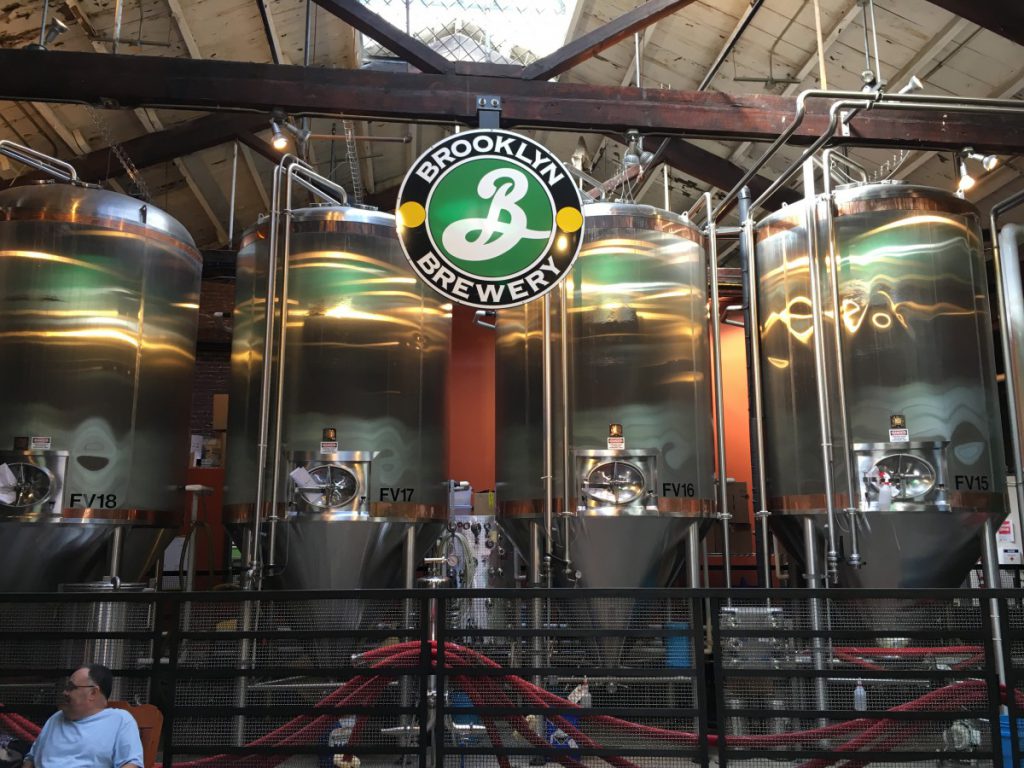
Once you walk in they have placed four 25 foot inactive fermentation tanks for décor. That’s marketing!

Shop selling Brooklyn Brewery merchandise like shirts, bottle openers, wallets, glasses, key chains all with the Brooklyn Brewery logo.
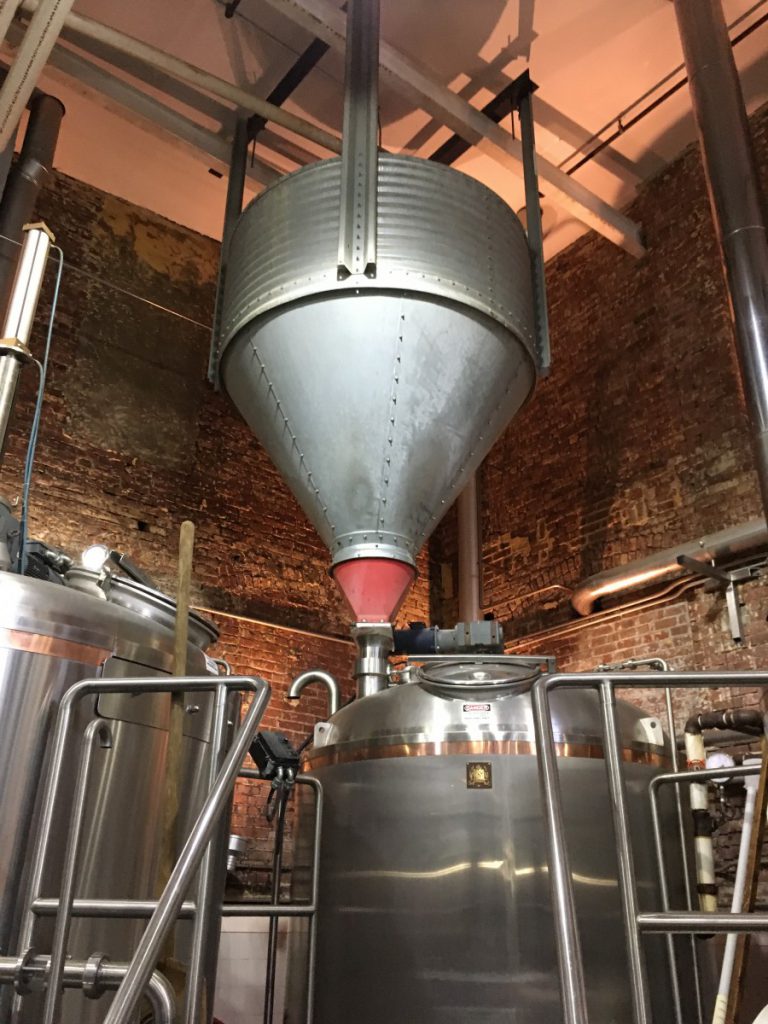
The cone shaped metal container has all the barley and malt that is added to the fermentation tanks from above.
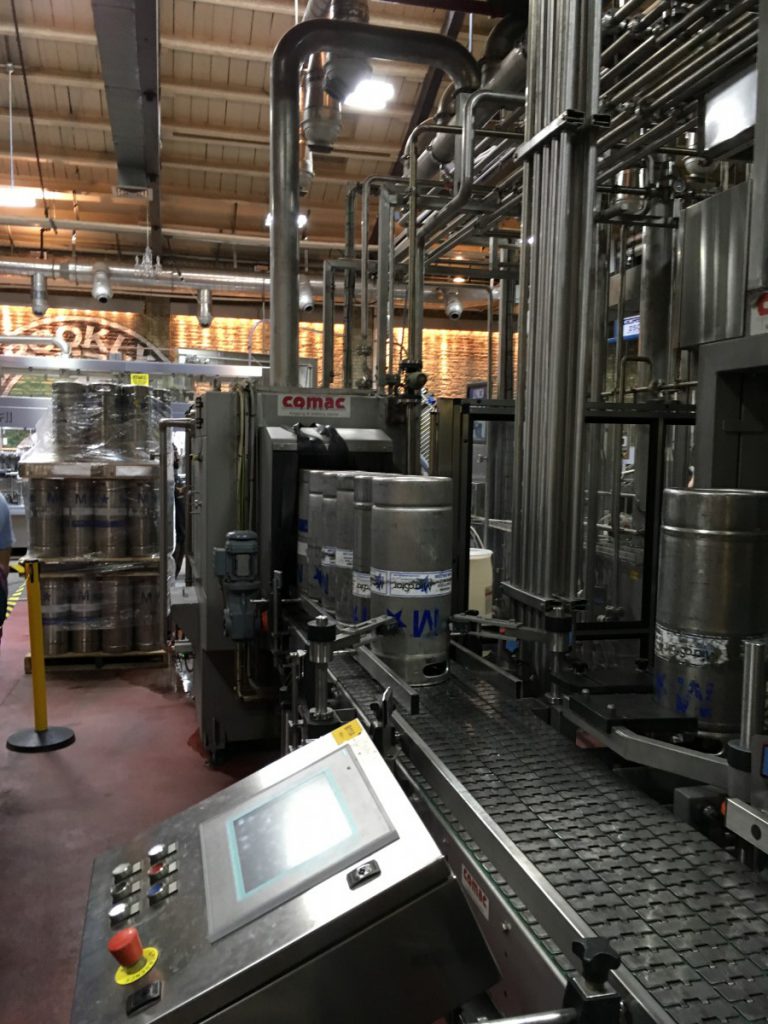
The whole process of putting the beer in kegs and packaging them together is automated but there are workers there to ensure nothing goes wrong.
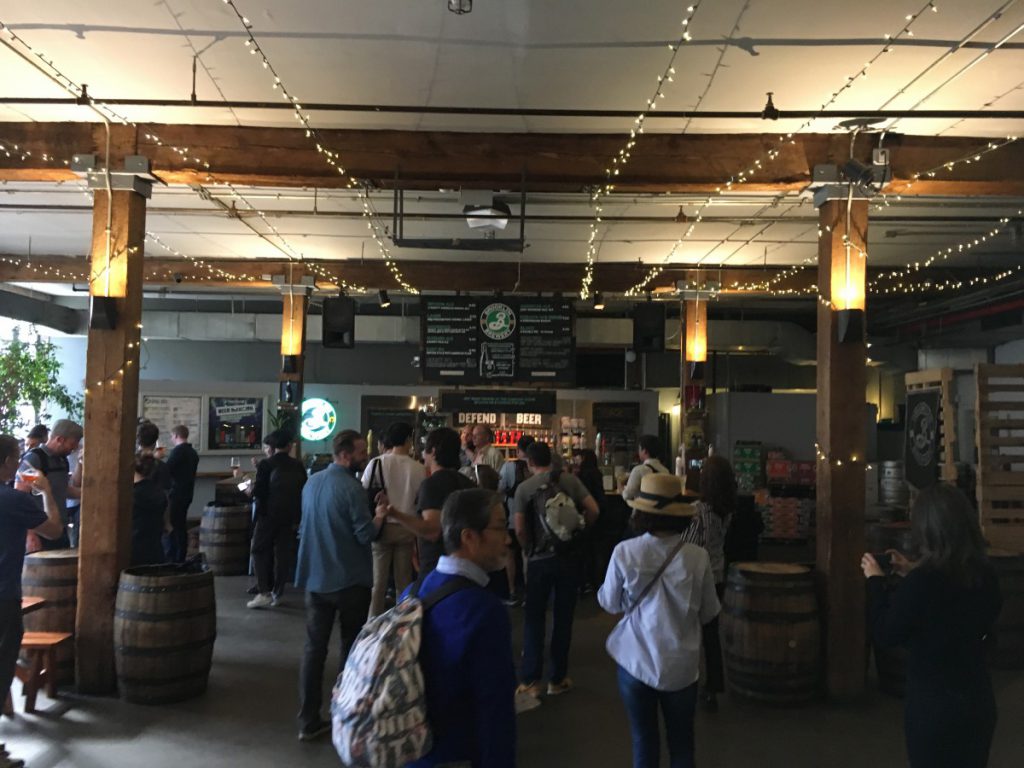
This was the tasting room where you can see clearly how spacious it was and had its own real bar with beers on tap for us to try.
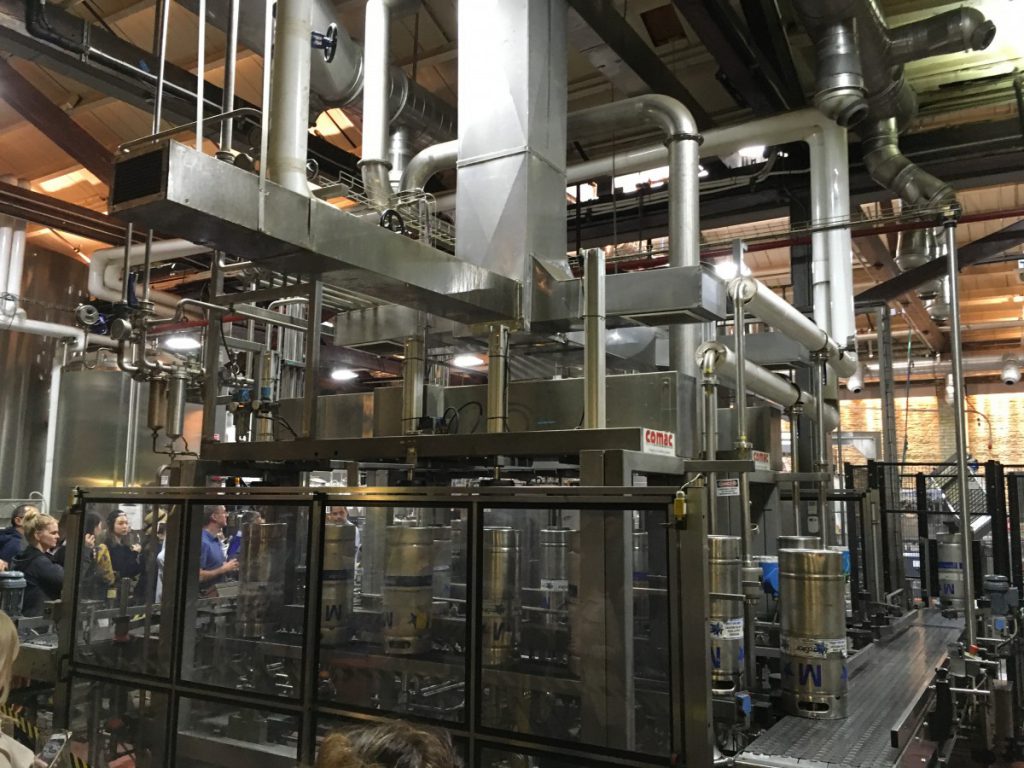
The whole facility is a huge array of pipes and machines that keep on working. Here is the machine that puts the beer in the kegs, very complex. The keg holds about 10 gallons of beer but the sizes vary if the merchant who purchased the beer orders bigger kegs. The Brooklyn Brewery sends beer to Norway and that beer is shipped in a huge container and then put in kegs over there. Tim told us it is much cheaper to do that. The quality of the beer is not changed.

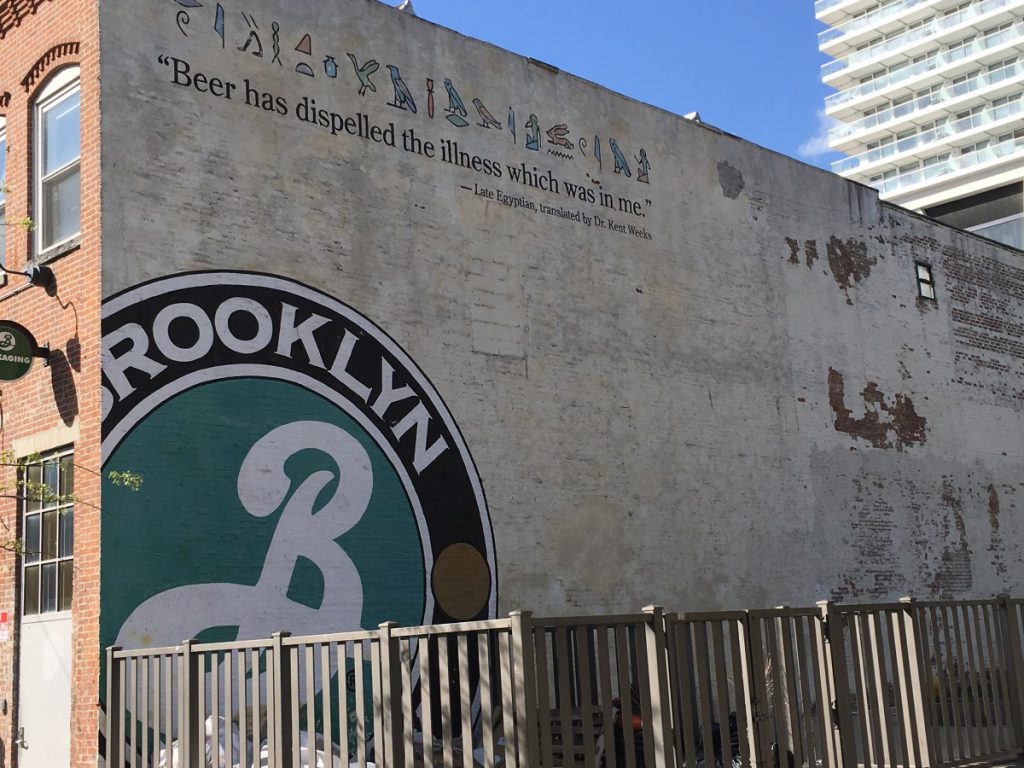

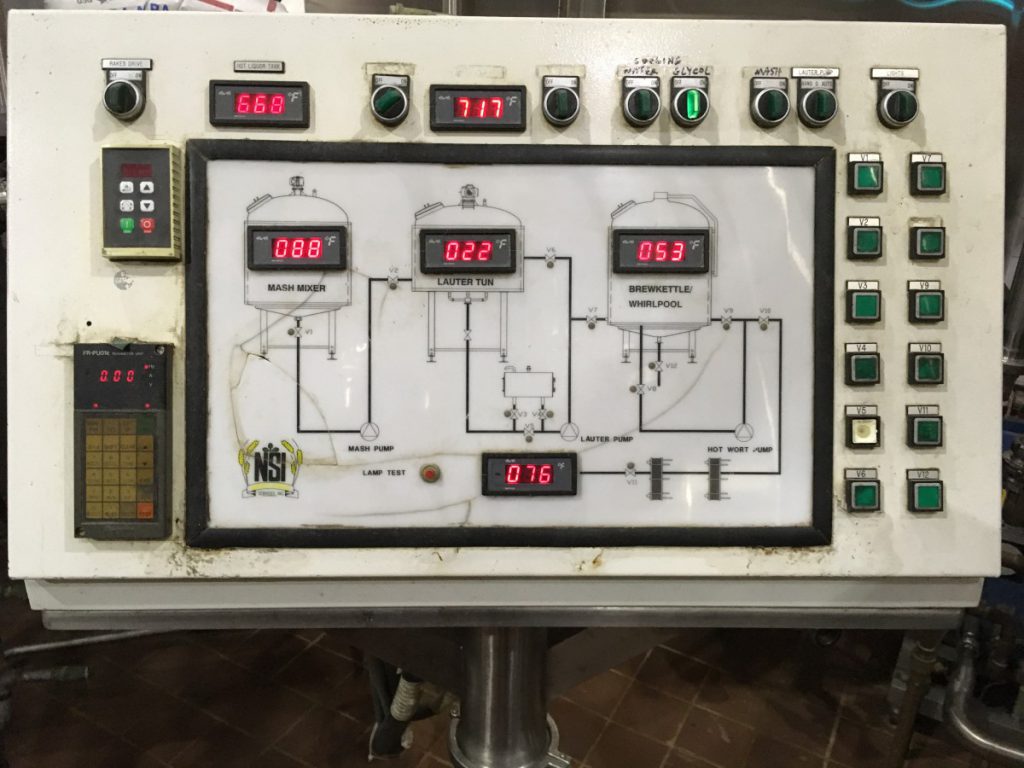
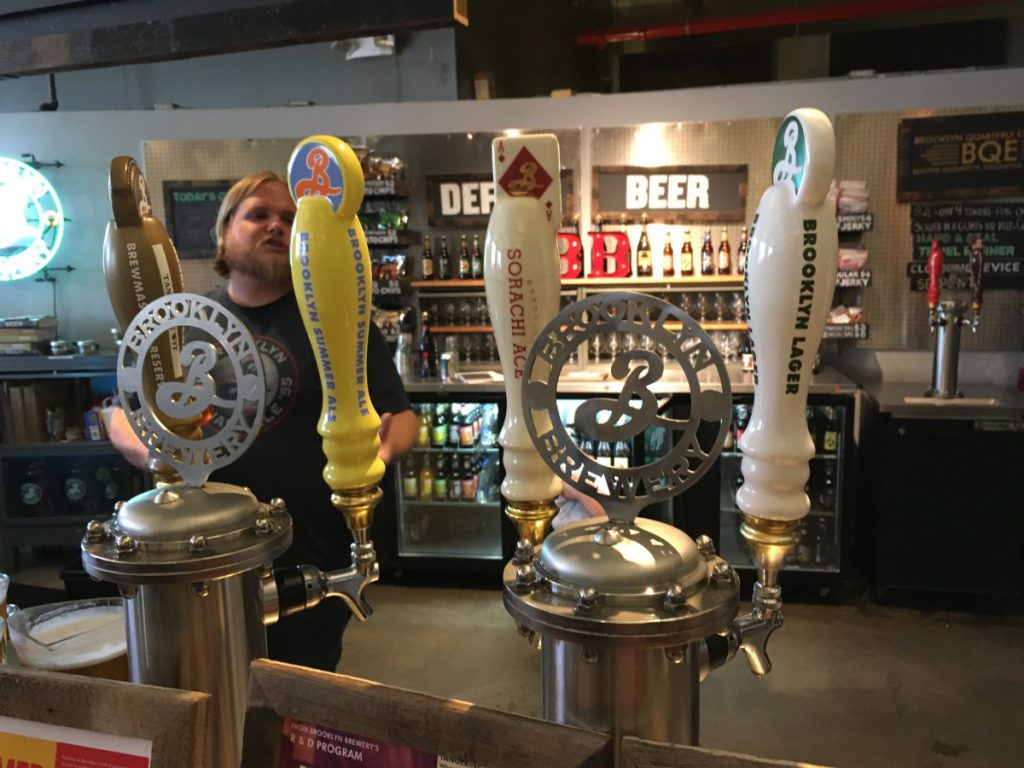
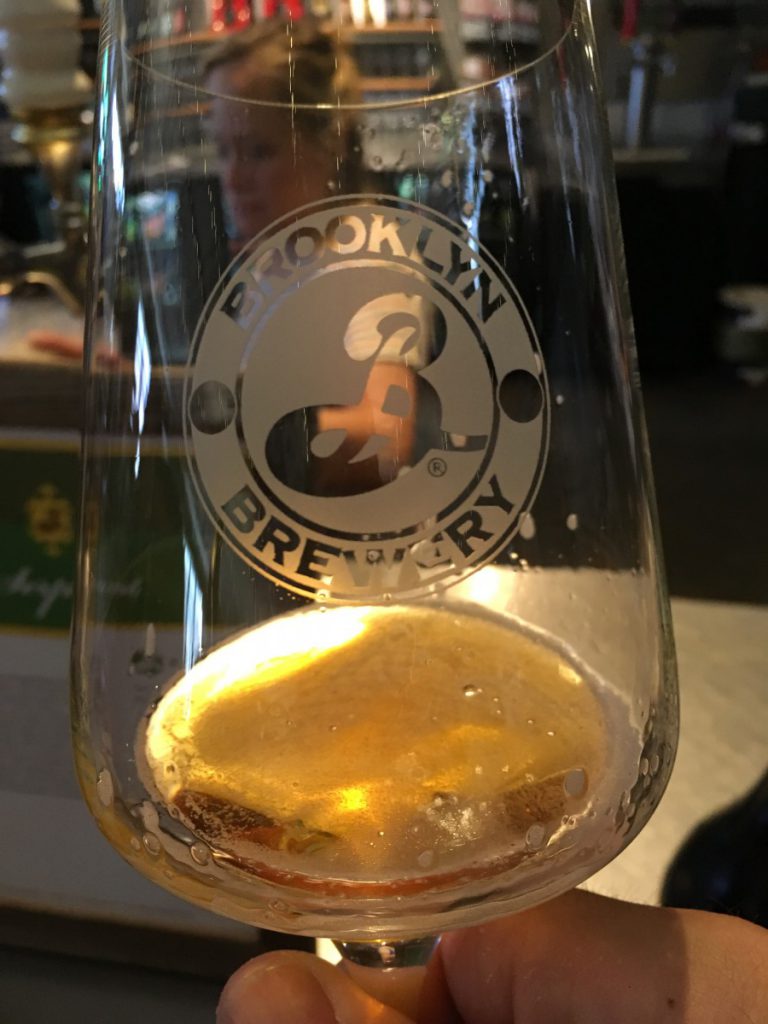



Harry, it seems like you had a really informative and fun tour. It’s nice to know that you learned additional information about their products that we did not taste in class. The most interesting part of your post is learning about the different beers you tasted that day, as I had no idea they crafted beers with so many foreign influences.
Good Day,
I find your white beer the most interesting to read about. Also your tasting room looks bigger than the coffee tasting room I saw at the Coffee Roaster. That gift you got from the tour looks nice and really large.